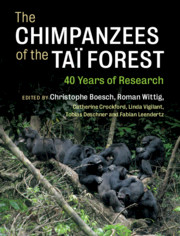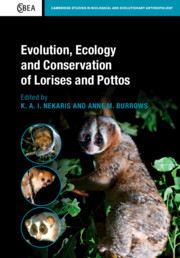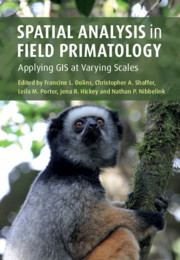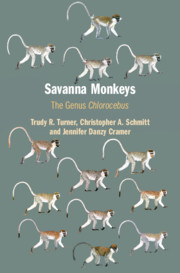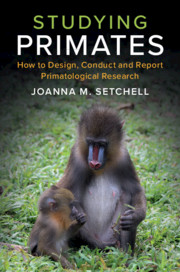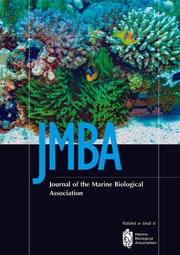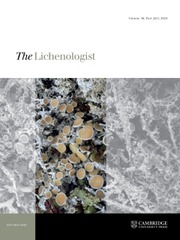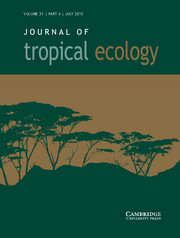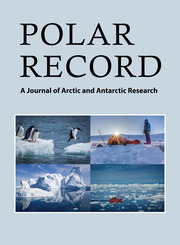Gibbon Conservation in the Anthropocene
£69.99
- Editors:
- Susan M. Cheyne, Borneo Nature Foundation
- Carolyn Thompson, University College London
- Peng-Fei Fan, Sun Yat-Sen University, China
- Helen J. Chatterjee, University College London
- Date Published: April 2023
- availability: Available
- format: Hardback
- isbn: 9781108479417
£
69.99
Hardback
Other available formats:
eBook
Looking for an inspection copy?
This title is not currently available on inspection
-
Hylobatids (gibbons and siamangs) are the smallest of the apes distinguished by their coordinated duets, territorial songs, arm-swinging locomotion, and small family group sizes. Although they are the most speciose of the apes boasting twenty species living in eleven countries, ninety-five percent are critically endangered or endangered according to the IUCN's Red List of Threatened Species. Despite this, gibbons are often referred to as being 'forgotten' in the shadow of their great ape cousins because comparably they receive less research, funding and conservation attention. This is only the third book since the 1980s devoted to gibbons, and presents cutting-edge research covering a wide variety of topics including hylobatid ecology, conservation, phylogenetics and taxonomy. Written by gibbon researchers and practitioners from across the world, the book discusses conservation challenges in the Anthropocene and presents practice-based approaches and strategies to save these singing, swinging apes from extinction.
Read more- Brings together researchers and practitioners, sharing the most up to date research and guidance on good practice for gibbon conservation
- Presents an accessible introduction to a range of methods, data collection techniques and analytical approaches, for readers with varied backgrounds
- Combines research with practice revealing the importance of collaboration and partnership across biodiversity conservation
- Provides case studies and research in a format which is accessible to researchers and practitioners
Customer reviews
Not yet reviewed
Be the first to review
Review was not posted due to profanity
×Product details
- Date Published: April 2023
- format: Hardback
- isbn: 9781108479417
- length: 358 pages
- dimensions: 250 x 176 x 23 mm
- weight: 0.76kg
- availability: Available
Table of Contents
Preface David Chivers
Introduction Susan M. Cheyne, Helen J. Chatterjee, Carolyn Thompson and Peng-Fei Fan
1. Taxonomy, ecology and conservation of Cao Vit Gibbon (Nomascus nasutus) since its rediscovery Peng-Fei Fan and Chang-Yong Ma
2. Conservation status of the northern Yellow-Cheeked Crested Gibbon (Nomascus annamensis) in Vietnam: an update Duc Minh Hoang, Bang Van Tran, Chuong Van Hoang and Herbert H. Covert
3. Strategies for recovery of the Hainan Gibbon (Nomascus hainanus): twenty years of multidisciplinary conservation effort Bosco Pui Lok Chan and Yik Fui Philip Lo
4. Gibbons in the anthropocene: lessons from a long-term study in Indonesia Susan M. Cheyne, Abdulaziz K, Supiansyah, Twentinolosa, Adul, Claire J. H. Thompson, Lindy Thompson, Reychell Chadwick, Helene Birot, Carolyn Thompson, Cara H. Wilcox and Eka Cahyaningrum
5. Demography of a stable Gibbon population (Hylobates moloch) in high-elevation forest on Java Susan Lappan, Rahayu Oktaviani, Ahyun Choi, Soojung Ham, Haneul Jang, Sanha Kim, Yoonjung Yi, Ani Mardiastuti and Jae Chun Choe
6. A tale of two Gibbon studies in Thailand Sompoad Srikosamatara and Intanon Kolasartsanee
7. Accessibility as a factor for selecting conservation actions for Pileated Gibbons (Hylobates pileatus) Intanon Kolasartsanee and Sompoad Srikosamatara
8. Calling from the wild: Mentawai Gibbon conservation fieldwork Arif Setiawan and Damianus Tatteburuk
9. Demography and group dynamics of Western Hoolock gibbons (Hoolock hoolock) in a community conserved village population in Upper Assam, India Jihosuo Biswas, Diplob Chutia, Jayanta Das, Joydeep Shil and H. N. Kumara
10. Challenges and prospects in the conservation of Hoolock Gibbons in India Dilip Chetry, Rekha Chetry and Parimal Chandra Bhattacharjee
11. Gibbons of Assam: impacts of environment and anthropogenic disturbance Jayashree Mazumder
12. Movement ecology of siamang in a degraded dipterocarp forest Christopher D. Marsh, Stephanie A. Poindexter, Ross A. Hill, Matthew G. Nowak, Abdullah Abdullah and Amanda H. Korstjens
13. Sympatric Gibbons in historically logged forest in North Sumatra, Indonesia Emma L. Hankinson, Vincent Nijman, Amanda H. Korstjens, Matt G. Nowak and Ross A. Hill
14. Adopting an interdisciplinary biosocial approach to determine the conservation implications of the Human-Gibbon Interface: a systematic review Carolyn Thompson, Helen J. Chatterjee, Samuel Turvey, Susan M. Cheyne and Peng-Fei Fan
15. Listen to the people, hear the Gibbons sing: the importance of incorporating local people's perceptions in conservation Jaima H. Smith, Anton Ario, Rahayu Oktaviani, Arif Setiawan, Agung Gunawan and Vincent Nijman
16. Long-Term outcomes of positive cultural value for biodiversity: historical insights from Chinese Gibbons Samuel Turvey
17. Gibbon phylogenetics and genomics Lucia Carbone, Mariam Okhovat and Christian Roos
18. The use of microsatellites in the management of captive Gibbons Lauren Lansdowne, Matyas Liptovszky, Kristiana Brink, Katie Dripps, Vivienne Li, Ed Hollox and Richard Badge.-
General Resources
Find resources associated with this title
Type Name Unlocked * Format Size Showing of
This title is supported by one or more locked resources. Access to locked resources is granted exclusively by Cambridge University Press to lecturers whose faculty status has been verified. To gain access to locked resources, lecturers should sign in to or register for a Cambridge user account.
Please use locked resources responsibly and exercise your professional discretion when choosing how you share these materials with your students. Other lecturers may wish to use locked resources for assessment purposes and their usefulness is undermined when the source files (for example, solution manuals or test banks) are shared online or via social networks.
Supplementary resources are subject to copyright. Lecturers are permitted to view, print or download these resources for use in their teaching, but may not change them or use them for commercial gain.
If you are having problems accessing these resources please contact [email protected].
Sorry, this resource is locked
Please register or sign in to request access. If you are having problems accessing these resources please email [email protected]
Register Sign in» Proceed
You are now leaving the Cambridge University Press website. Your eBook purchase and download will be completed by our partner www.ebooks.com. Please see the permission section of the www.ebooks.com catalogue page for details of the print & copy limits on our eBooks.
Continue ×Are you sure you want to delete your account?
This cannot be undone.
Thank you for your feedback which will help us improve our service.
If you requested a response, we will make sure to get back to you shortly.
×


